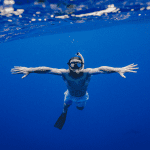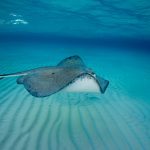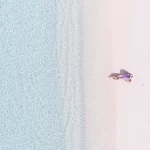Did you know that there are a little under 500 recorded fish species in the waters around Grand Cayman? Given this breathtaking array of marine life, choosing only ten feels like picking our favorite stars in a galaxy!
Of course, any list we come up with is only an introduction to the dazzling range of creatures you can see on our snorkeling tours and diving experiences in Grand Cayman. It’s this variety of species that we have tried to capture with our picks.
So keep reading and find out our choices for ten aquatic animals you will encounter in Grand Cayman. If you have any questions for the Sunset House team, please get in touch.
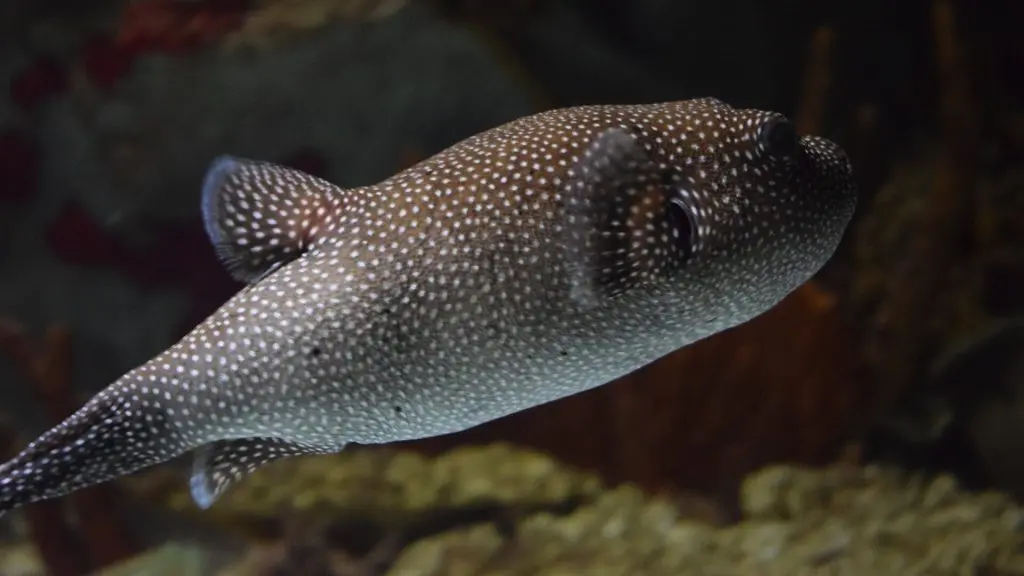
Meet Grand Cayman’s Charming Puffer Fish
Tetraodontiformes
Spotting these charismatic creatures, known for their endearing ability to puff up when threatened, is a delight for divers. Typically grey with black eyes, puffer fish vary in size. Some are only a few inches long, while others can grow to around two feet.
These fish are usually shy, so when you’re on a dive in Grand Cayman, look for them hiding under ledges or hidden spots. The exception to this is during puffer fish mating season when they linger above the reef.
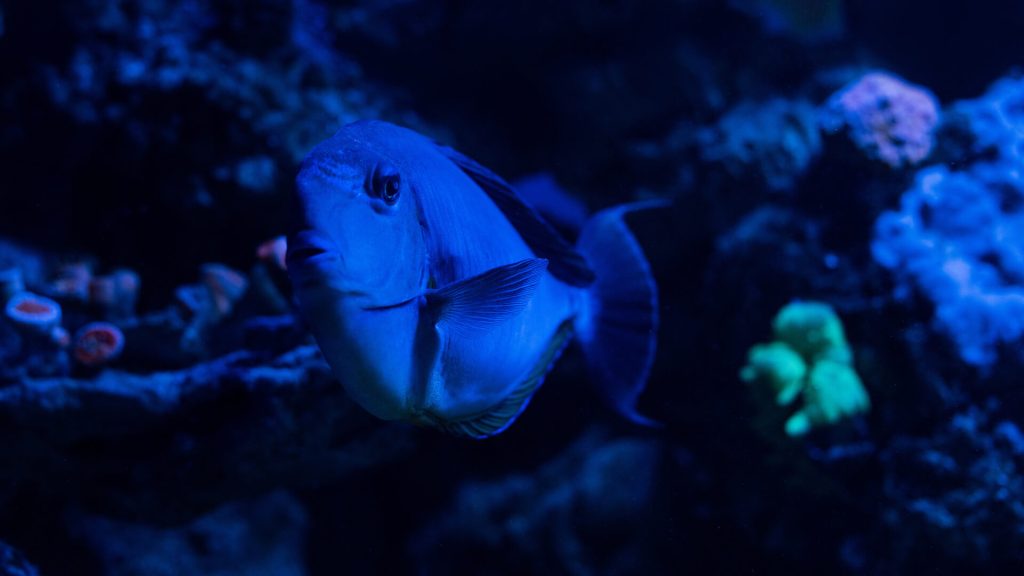
Admire the Beautiful Colors of the Blue Tang
Paracanthurus hepatus
Famed for its vibrant hues, the blue tang adds a splash of iridescence to the underwater world. Swirling amidst the corals, these striking fish captivate with their electric blue bodies. In some cases, the deep blue can even resemble a purple tone.
Blue tang plays a key role in keeping reefs healthy. Much like sheep, they graze their surroundings, eating potentially harmful algae growing on sponges and corals.
If your upcoming trip is your first Cayman escape, we think you’ll appreciate reading our First Timer’s Guide to Grand Cayman Island. It’s filled with all the useful information you need to make the most of your time here in paradise!
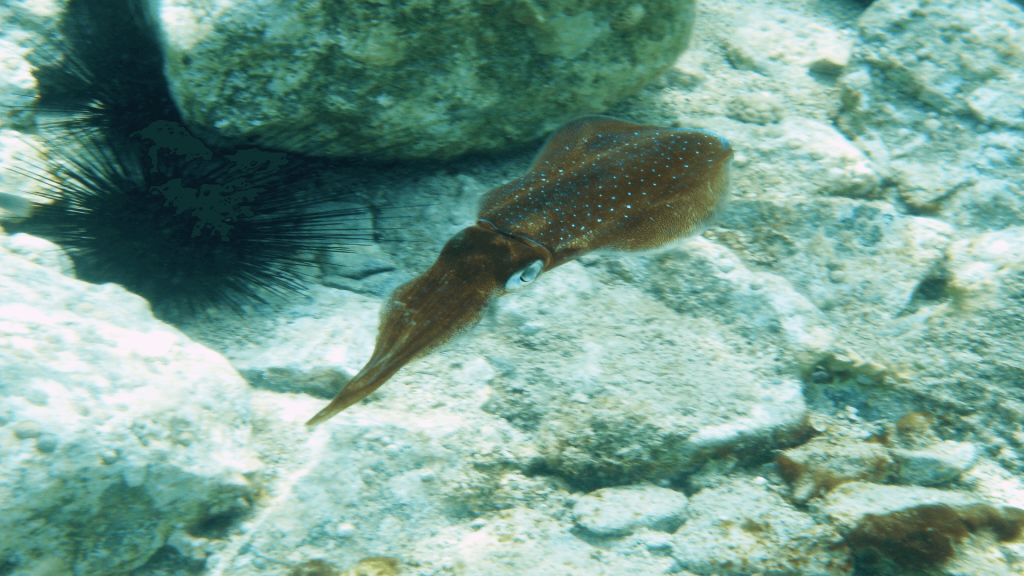
Watch the Bewitching Reef Squid on a Grand Cayman Dive
Sepioteuthis sepioidea/Sepioteuthis lessoniana
Graceful and elusive, reef squid glide through the water with fluid movements and an inquisitive nature. Observing their quick changes in coloration and mesmerizing locomotion is a true underwater spectacle.
Ordinarily, reef squid are brown, but with the changing colors rippling over their skin ( a phenomenon that is a form of communication) you may need to look a little closer to find one.
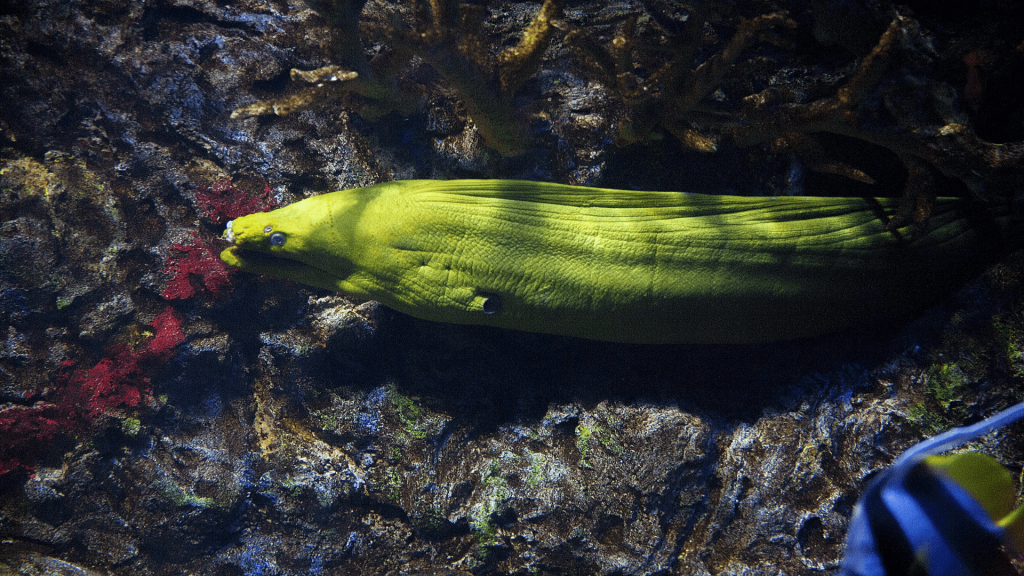
Say Hello to a Green Moray Eel When You’re in Grand Cayman!
Gymnothorax funebris
With their serpentine-like presence, green moray eels silently command attention. Nestled within crevices, hiding under overhangs, or gliding across the reef, these magnificent creatures embody an enigmatic allure.
Interestingly, green moray eels are actually blue and covered with yellow mucus. This combination creates the distinctive color we see when snorkeling and diving.
These fearsome-looking animals breathe through their mouths, displaying a fine set of sharp teeth. But despite their appearance, green moray eels are docile and gentle.
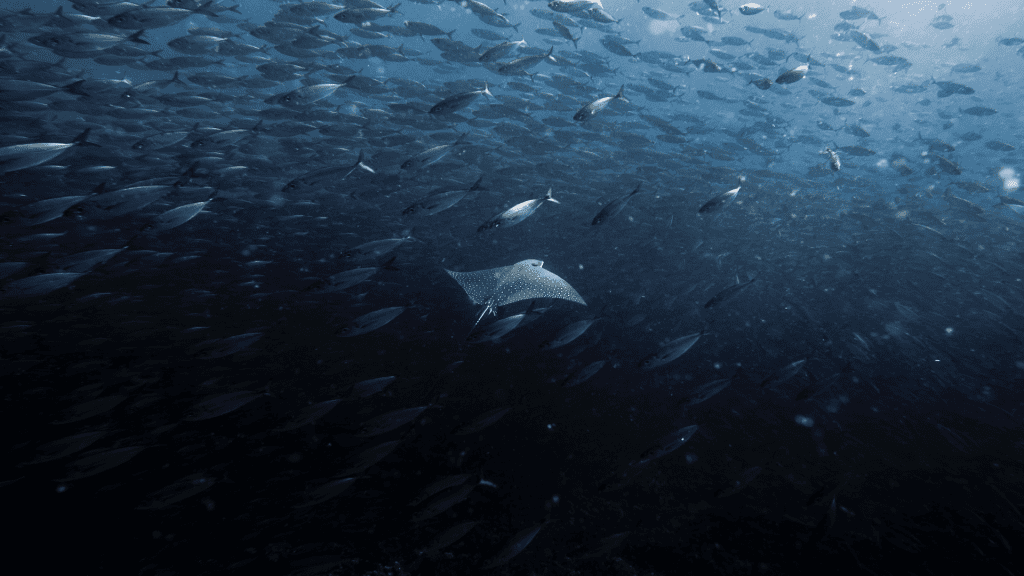
Witness the Majesty of Grand Cayman’s Eagle Rays
Myliobatidae
Seeing the majestic eagle ray effortlessly glide through the water is an awe-inspiring sight. Their expansive wingspan and graceful movements evoke a sense of wonder in everyone who sees them.
Eagle rays tend to feed in sandy areas and explore wall sites in small groups of four or five. It’s also common to spot them around the USS Kittiwake wreck, which you can visit on our Kittiwake Grand Cayman Dive.
While eagle rays have a relatively unspectacular creamy white underside, their backs are either black or navy blue and adorned with white markings resembling dashes or circles. You can also identify eagle rays by their shovel-shaped nose. They use this to forage for food in the sand.
During your trip-planning research, you will likely come across Stingray City, one of Grand Cayman’s most popular attractions. However, southern stingrays populate this sandbar, not Eagle Rays.
Find out more about this unique place by reading our blog Is Stingray City in Grand Cayman Worth the Visit?
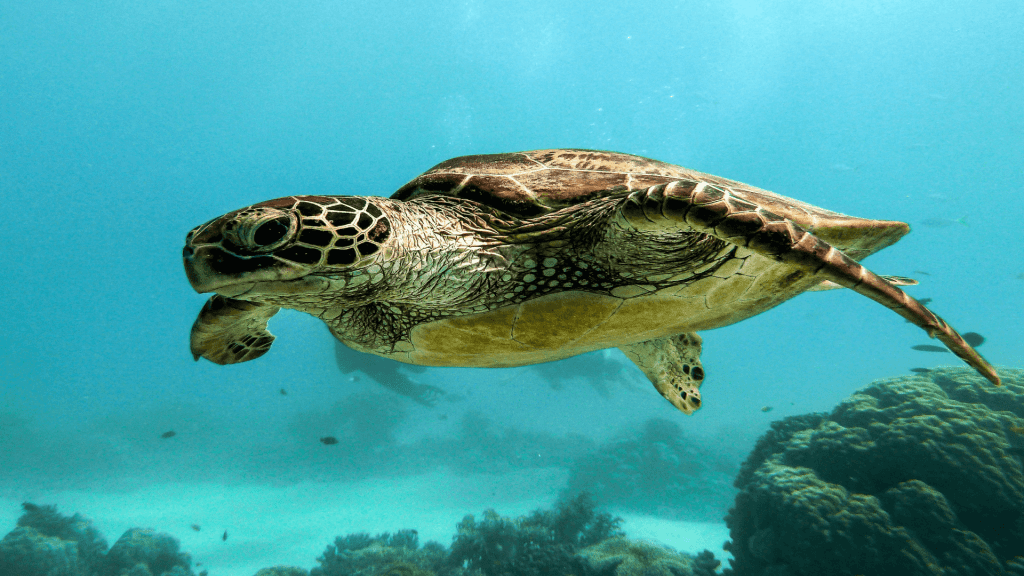
Embrace a Slower Pace with Grand Cayman’s Sea Turtles
Chelonia mydas/Eretmochelys imbricata/Caretta caretta
Grand Cayman’s pristine waters are a sanctuary for several sea turtle species, each with its own distinctive charm. In fact, the Cayman Islands are so renowned for their turtles that its name in Spanish is Las Tortguas—‘the Turtles’ in English.
When snorkeling and diving in Grand Cayman, you’re most likely to encounter hawksbill and green turtles. But during the summer mating season, you can also add loggerhead turtles to that list! Look out for physical signs of these animals’ long and adventurous lives, such as markings and barnacles on their shells.
If you’re planning snorkeling experiences for your stay on our island, one of the best places to spot sea turtles is at Spotts Beach, one of our picks for the most beautiful beaches in the Cayman Islands.
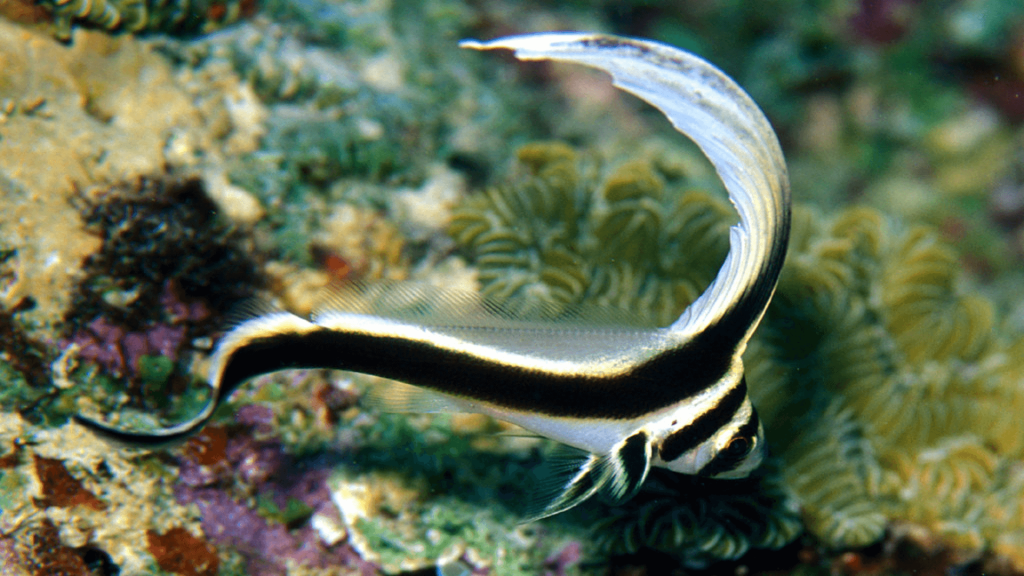
Marvel at the Elegance of a Juvenile Spotted Drum
Eques punctatus
For majesty alone, it’s hard to beat the juvenile spotted drum. This fish flaunts mesmerizing patterns and movements that resemble an underwater ballet. Imagine a black-and-white ‘C’ complete with elegant, trailing fins.
As their name also suggests, juvenile spotted drums are small, but they make up for it with some daredevil behavior.
Are you already itching to get in the water and start exploring? Our 2-Tank Morning Dive in Grand Cayman is a great place to start learning more about the adventures waiting for you.
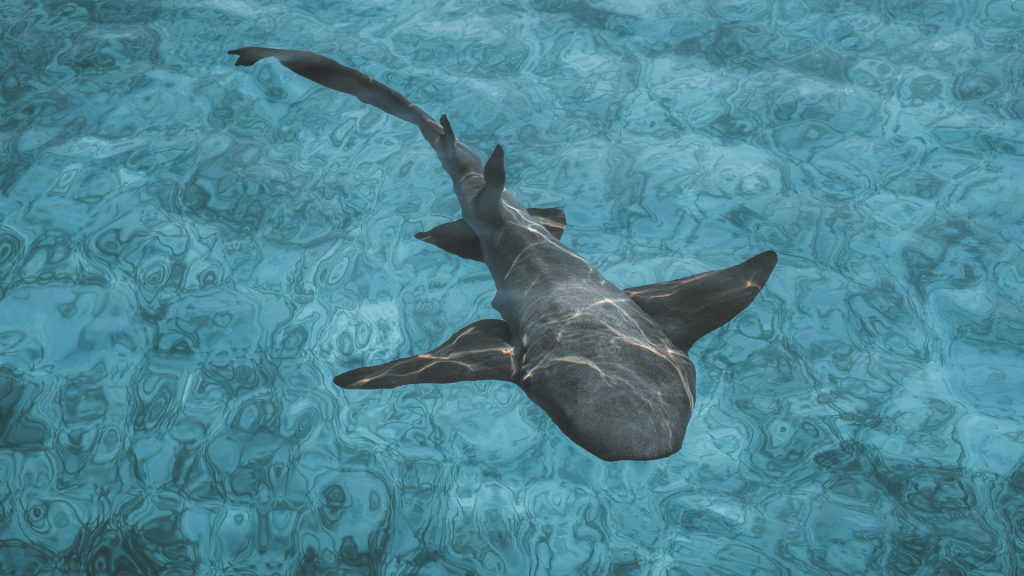
Keep Yours Peeled for Grand Cayman’s Various Shark Species
Black Tip, Caribbean Reef, Hammerhead, Nurse Sharks
The mere mention of sharks evokes excitement and curiosity, and when you see these apex predators in person, you’ll immediately fall under their spell. From the sleek black tip to the awe-inspiring hammerhead, Grand Cayman’s waters are home to numerous species.
Nurse sharks, in particular, inhabit west coast waters, usually swimming in shallow sites. We even have resident nurse sharks (and sea turtles) at our own house reef. Find out more about diving the Sunset House Reef.
Reef Sharks are a common presence too, albeit more at East End and North Wall sites. At the latter, you’re also likely to observe hammerheads.
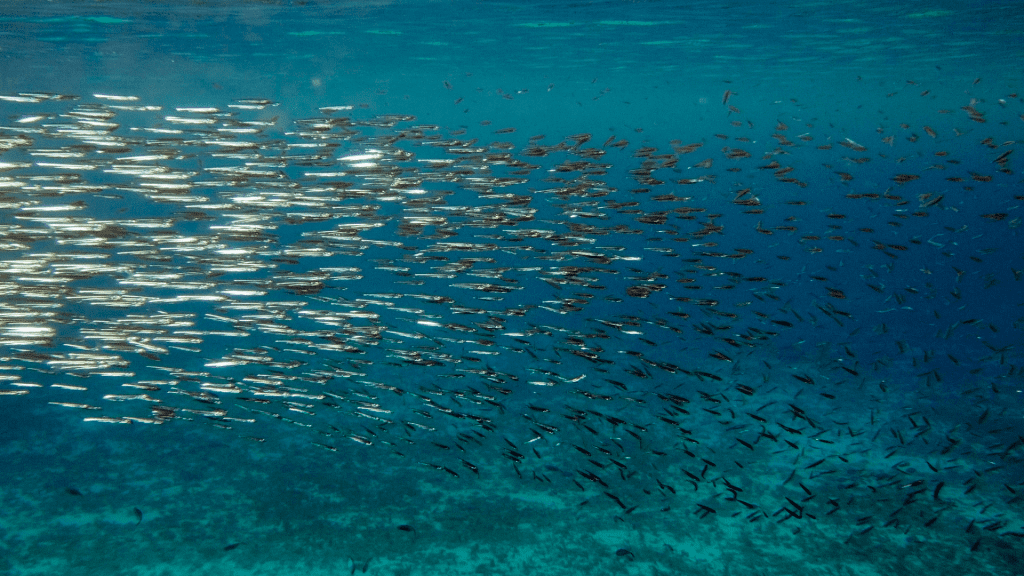
Immerse Yourself in the Sparkle of Grand Cayman’s Silversides
Atheriniformes
The shimmering clouds of Silversides create an amazing spectacle as they move in unison, catching the sunlight and adding a surreal quality to the underwater landscape. You can witness their harmonious movements in Grand Cayman’s waters every summer.
These sparkling fish gather in huge schools to create a protective mass against would-be predators. As this ‘silver rush’ moves around our shallow reefs, walls, and wrecks, it’s easy to see why divers travel from all over the world to witness it for themselves.
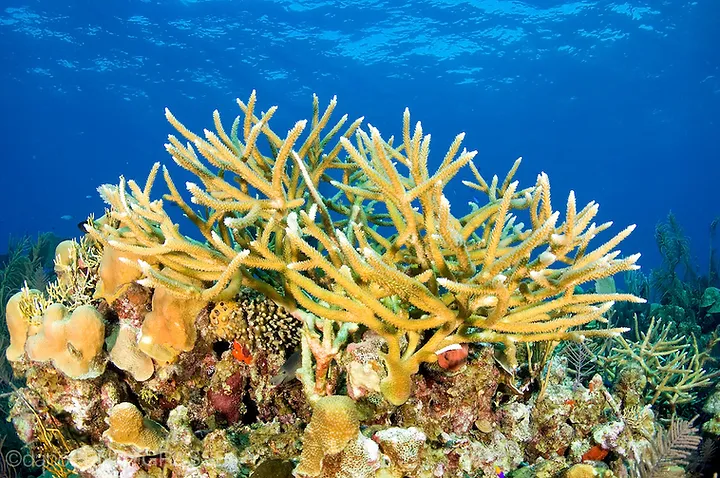
Grand Cayman’s Corals and Sponges Are Animals Too!
Did you know that coral reefs are animals too? Yes, they are sessile (i.e. they take root in the ocean floor), but they don’t produce their own food which, of course, plants do. Instead, corals use tiny tentacle arms to catch floating food, eating it in a microscopic mouth.
So, while corals may lack the body parts and faces that we’re familiar with, they are nonetheless members of the animal kingdom!
Now that you’ve had the science lesson, here are some of our favorite corals and sponges to look out for:
- Orange Elephant Ear Sponge
- Black Gorgonia Fans
- Elkhorn Coral
- Staghorn Coral
- Barrel Sponge
Don’t miss our Guide to Coral Reef Diving in Grand Cayman if you want to immerse yourself in the captivating reefs in our crystal-clear waters!
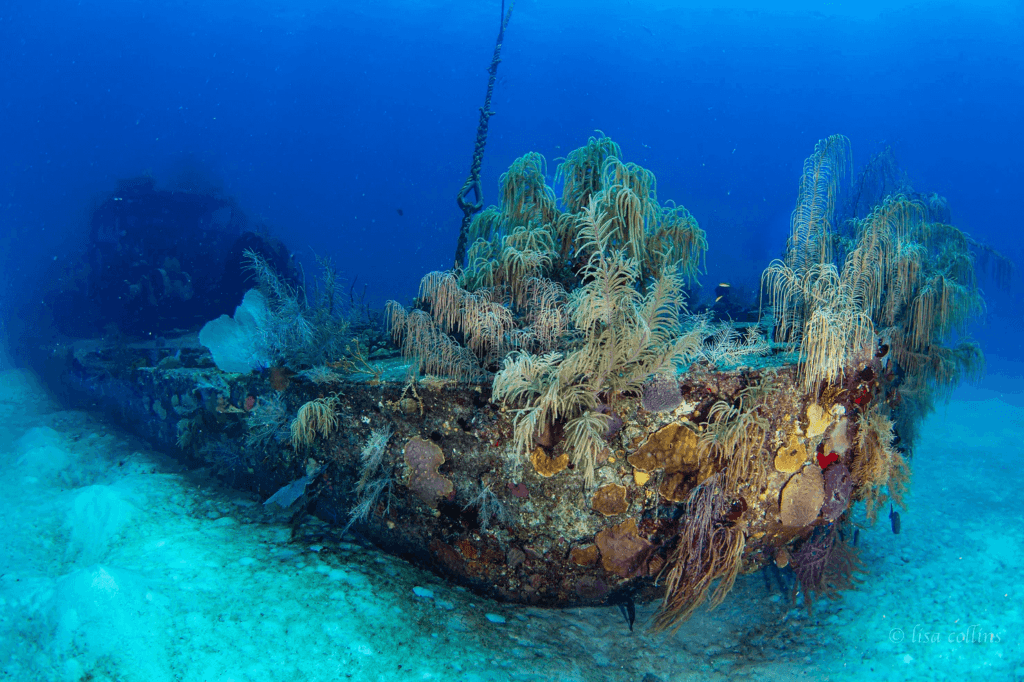
Book Your Stay with Sunset House Grand Cayman!
So, there you have it—these are just ten aquatic animals you will encounter in Grand Cayman! If you’re ready to see these stunning species in person, and discover many more besides, book your stay at Sunset House and start preparing for your adventure.
Learn more about our Grand Cayman dive packages and browse the rooms at Sunset House. And if you have any questions about planning your trip, please don’t hesitate to contact us.


